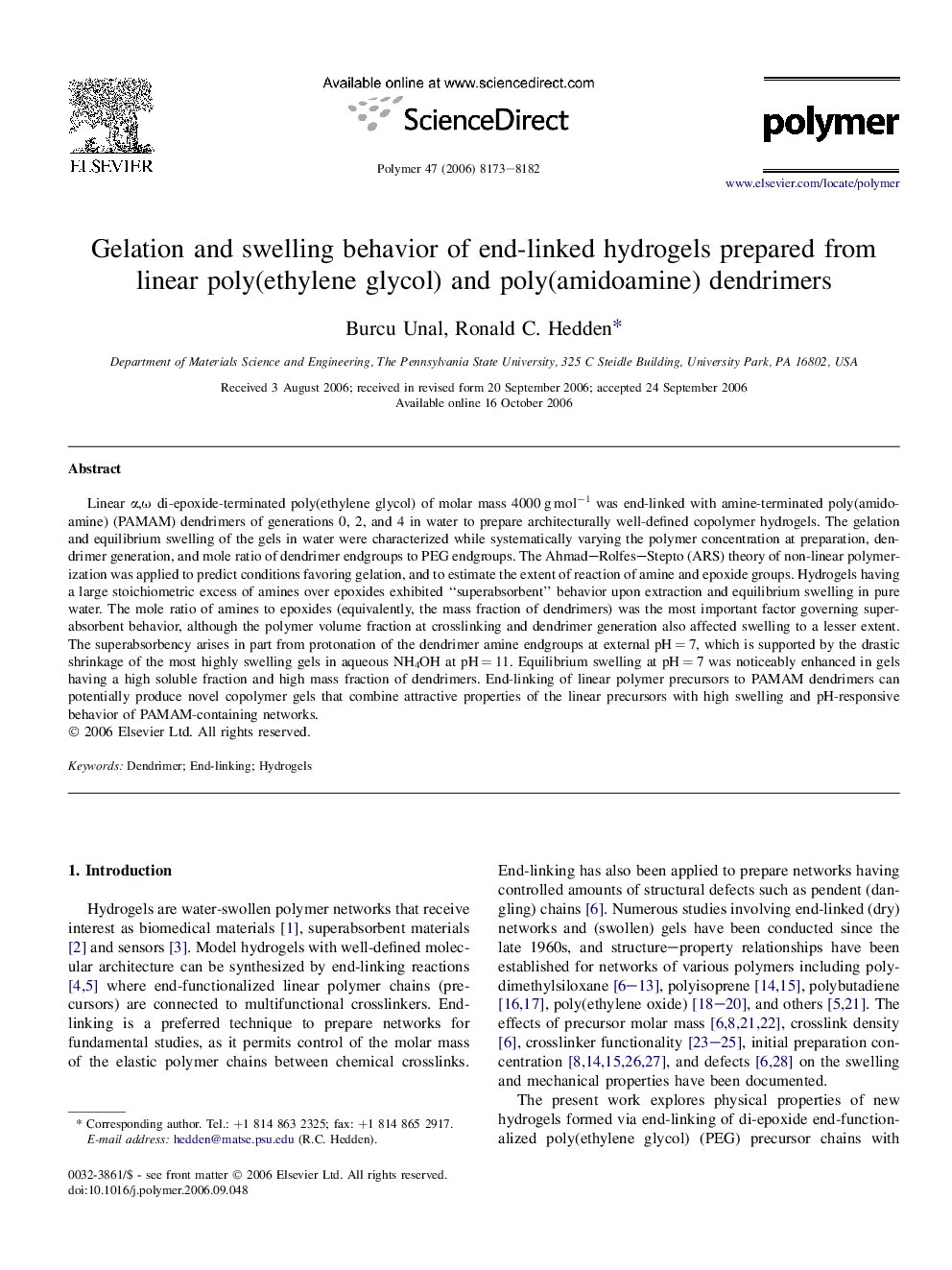| Article ID | Journal | Published Year | Pages | File Type |
|---|---|---|---|---|
| 5188559 | Polymer | 2006 | 10 Pages |
Abstract
Linear α,Ï di-epoxide-terminated poly(ethylene glycol) of molar mass 4000 g molâ1 was end-linked with amine-terminated poly(amidoamine) (PAMAM) dendrimers of generations 0, 2, and 4 in water to prepare architecturally well-defined copolymer hydrogels. The gelation and equilibrium swelling of the gels in water were characterized while systematically varying the polymer concentration at preparation, dendrimer generation, and mole ratio of dendrimer endgroups to PEG endgroups. The Ahmad-Rolfes-Stepto (ARS) theory of non-linear polymerization was applied to predict conditions favoring gelation, and to estimate the extent of reaction of amine and epoxide groups. Hydrogels having a large stoichiometric excess of amines over epoxides exhibited “superabsorbent” behavior upon extraction and equilibrium swelling in pure water. The mole ratio of amines to epoxides (equivalently, the mass fraction of dendrimers) was the most important factor governing superabsorbent behavior, although the polymer volume fraction at crosslinking and dendrimer generation also affected swelling to a lesser extent. The superabsorbency arises in part from protonation of the dendrimer amine endgroups at external pH = 7, which is supported by the drastic shrinkage of the most highly swelling gels in aqueous NH4OH at pH = 11. Equilibrium swelling at pH = 7 was noticeably enhanced in gels having a high soluble fraction and high mass fraction of dendrimers. End-linking of linear polymer precursors to PAMAM dendrimers can potentially produce novel copolymer gels that combine attractive properties of the linear precursors with high swelling and pH-responsive behavior of PAMAM-containing networks.
Related Topics
Physical Sciences and Engineering
Chemistry
Organic Chemistry
Authors
Burcu Unal, Ronald C. Hedden,
